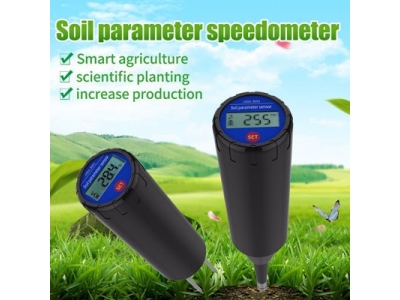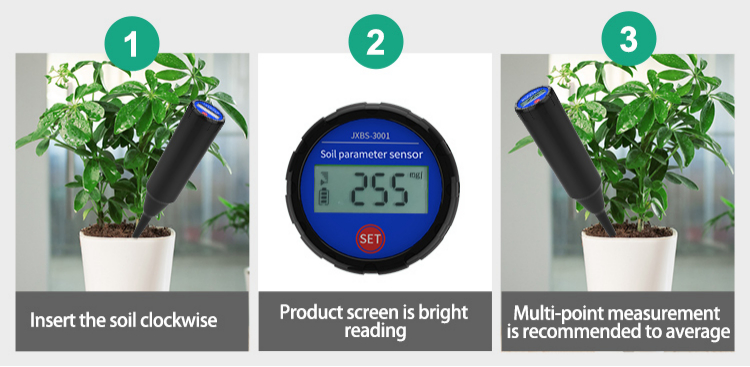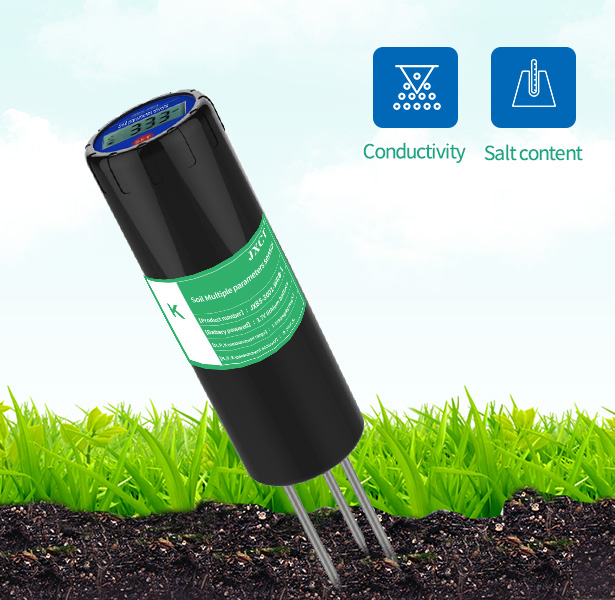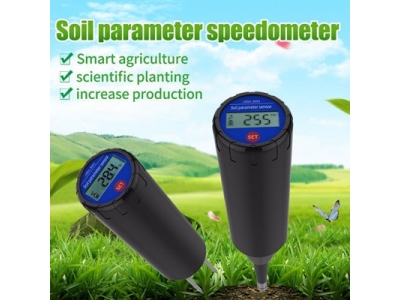Growing plants successfully in your garden, especially edible crops, requires a certain amount of effort and a good understanding of the conditions the plants need to grow. One of the most influential factors has to do with soil pH and the need to make sure your soil is in the proper range. Don't worry though, a soil PH tester can be used for testing, once you have a general idea, you can do a good job of testing the PH of your garden soil and keeping it where it needs to be!

What is soil pH?
Soil pH is a measurement of how acidic or basic (also known as alkaline) the soil is, like the acidity we are familiar with regarding liquids.
pH – the potential of hydrogen – measures the concentration of hydrogen ions, both positively charged hydrogen ions (H+) and negatively charged hydroxyl ions (OH-) in an environment. More positively charged hydrogen ions creates an acidic environment; a greater amount of negatively charged hydroxyl ions produces an environment that is less acidic, or basic.
The acidity or alkalinity of something is measured on a logarithmic scale ranging from 0 – 14. Values increase or decrease by a factor of ten when there is a change in one full numerical unit. This means that a soil with a pH of 5 is ten times more acidic than one that has a pH of 6, even though the value only changed by one.
Values on the pH scale are broken down to distinguish the relative acidity or alkalinity:
0 – 2 is strongly acidic.
3 – 5 is weakly acidic.
6 – 8 is considered neutral.
9 – 11 is weakly basic.
12 – 14 is strongly basic.

How to use a soil pH tester?
Soil pH tester is a metal pronged instrument that is inserted into the soil to test soil pH, light intensity, and moisture levels. A soil tester takes some of the guesswork out of where and how to plant your flowers, shrubs or trees. You can use the tester to determine the current levels of the soil, and alter them according to the specific needs of the plants you wish to place there. Plant grasses, shrubs, flowers or trees that need similar conditions together in one area, with those needing different conditions in a separate area of the yard or garden.
Step 1
Clean the prongs of the soil pH tester with distilled water and a clean cloth before use, and between uses. This will keep the readings from being affected by the pH of a previous test or tap water.
Step 2
Insert the prongs into the soil you wish to measure. The first reading that appears will be a pH, which is measured on a scale from 1 to 14, with 1 being the most acidic and 14 being the most alkaline. Seven is a neutral pH. Most plants will grow in a pH between 6 and 7.5. The soil tester measures pH levels from 3.5 to 8. Alter soil pH by adding limestone to raise it, or sulfur to lower it.
Step 3
Press the button on the sensor to view the moisture readings. The tester measures the percentage of moisture content in 10 percent increments, from no moisture to complete saturation. Most plants will want moist soil in the mid-range. Sand can be added to soil to increase drainage capabilities for excessively wet soil.
Step 4
Press the button on the soil tester again to view the light readings. Light readings measure light intensity in foot-candles from 0 to 2,000. For reference, average indoor home lighting is around 100 foot-candles. Plants requiring full sun can be planted in the upper light ranges, and plants requiring shade can be planted in the lower light areas.

Is it Important to Know the pH of Your Soil Accurately?
The answer to that question depends very much on what you will do with the information. If you use the information to select plants for your garden, then you don’t need to know the pH very accurately. Knowing it is very acidic, slightly acidic, slightly alkaline or very alkaline is good enough. The reason for this is that most plants grow quite well in a wide pH range. Most plants will grow in slightly acidic, neutral and slightly alkaline pH. That is a range of approximately 6 to 7.5. Fortunately for us gardeners, most of us are in this range.
I have a pH of 7.4 (measured with a lab grade instrument) and I can grow some ‘acid loving’ plants, but not most of them – they just don’t do well. However, I can grow many plants that ‘prefer’ an acidic soil because these plants can also grow in slightly alkaline conditions, namely a pH of 7.4. Most plants are quite adaptable.
If you only want to know the approximate pH range you have in your garden, the pH testers mentioned above may be accurate enough.
pH measurement accuracy is important if you plan to change the pH of your soil. Remember a pH change of 1 is actually an acidity change of 10, so it is easy to ‘over treat’ your soil if you don’t start with accurate values. Besides being wasteful it can seriously damage your plants.








